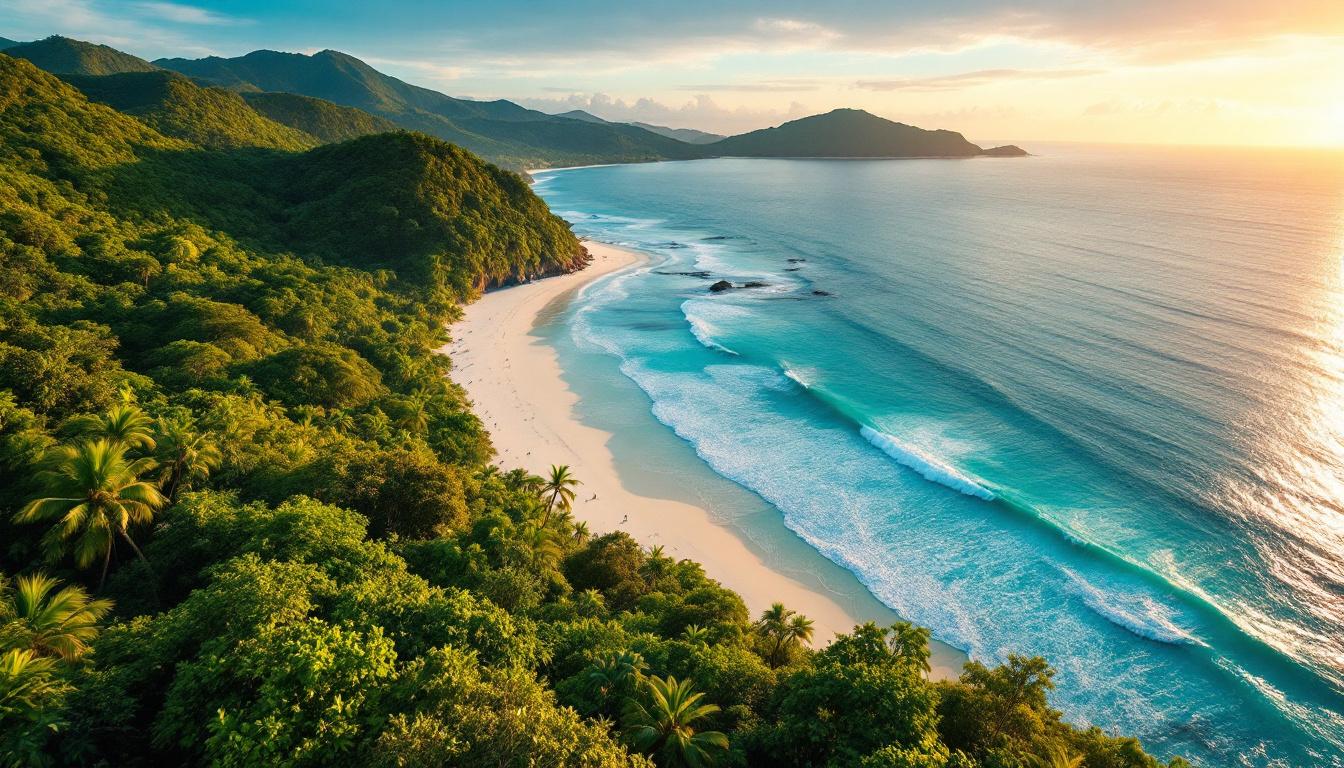Most Brazilian beaches require nothing more than a taxi ride from your hotel. But Lopes Mendes Beach on Ilha Grande demands something extraordinary: a 45-minute boat journey followed by a 25-minute rainforest hike. This unique access system creates Brazil’s most naturally exclusive coastal paradise, where UNESCO protection and geography work together to preserve what locals call their hidden treasure.
While millions crowd into Ipanema and Copacabana daily, fewer than 200 visitors reach Lopes Mendes on typical weekdays. The reason isn’t restrictions or fees—it’s the simple reality that this 2.7km stretch of pristine sand can only be accessed by those willing to earn their paradise through adventure.
I discovered this reality firsthand when my taxi boat captain smiled knowingly as other passengers groaned about the mandatory hike ahead. “The beach chooses its visitors,” he explained in Portuguese, gesturing toward the dense Atlantic Forest trail that would become our gateway to Brazil’s most protected coastal gem.
Why boat access creates natural exclusivity
The mandatory transportation sequence that filters crowds
Every visitor to Lopes Mendes must follow the same ritual: board a schooner from Vila do Abraão for the 45-minute journey to Praia do Pouso, then tackle the moderate-difficulty trail through protected Atlantic Forest. This isn’t tourist theater—it’s the only way to reach the beach, creating what conservationists call “access-controlled paradise” without artificial barriers.
How UNESCO protection shapes the visitor experience
Since Ilha Grande’s UNESCO World Heritage designation in 2019, strict development limits ensure no roads, hotels, or permanent structures mar Lopes Mendes’ coastline. The boat-plus-hike requirement isn’t inconvenience—it’s conservation in action, preserving Brazil’s last major undeveloped beach within three hours of Rio de Janeiro.
The fishing community’s protective stewardship
Local attitudes toward sustainable tourism
Ilha Grande’s 5,000 residents have witnessed what overdevelopment did to mainland beaches. Fishing families who’ve lived here for generations actively support the current access system, knowing it protects their traditional lifestyle while allowing respectful tourism. Boat operators—many from fishing families—serve as informal guardians, educating visitors about conservation as they navigate to Pouso Beach.
Community-driven preservation efforts
Local vendors on Lopes Mendes sell fresh açaí and coconut water, but remove all waste daily to maintain the beach’s pristine condition. No permanent facilities exist—no beach clubs, no umbrellas for rent, no cell phone coverage—creating an authentic Brazilian coastal experience that mainland beaches lost decades ago.
Cost advantages over mainstream Brazilian beaches
Budget comparison with Rio’s famous coastline
While Ipanema hotel rooms average $200+ per night, accommodation in Vila do Abraão starts at $30, with the round-trip boat fare costing just R$70 ($12 USD). Factor in lower food costs and free beach access, and a three-day Lopes Mendes experience costs less than one night at a beachfront Rio hotel.
What the access investment provides
That modest boat fare and 25-minute hike deliver experiences impossible on developed beaches: swimming in water with 20-meter visibility, surfing breaks with fewer than a dozen people, and sunrise walks on sand unmarked by umbrellas or vendor stalls. The investment in effort returns exponentially in authentic Brazilian coastal beauty.
The authentic island experience
Cultural immersion through necessary interactions
Unlike Rio’s beaches where tourists remain isolated in hotel bubbles, reaching Lopes Mendes requires engaging with local boat captains, trail guides, and island vendors. These interactions aren’t tourist theater—they’re genuine connections with islanders whose families have fished these waters for centuries, offering insights into authentic Brazilian coastal culture.
Environmental preservation in action
The beach’s powdery white sand remains unmarked by development because the access system naturally limits daily visitors. No parking lots, no high-rise shadows, no jet ski rentals—just 2.7 kilometers of protected coastline where leatherback turtles still nest and native vegetation grows to the high tide line.
Lopes Mendes proves that Brazil’s most extraordinary beach experiences still exist for those willing to earn them. The boat-plus-hike access isn’t an obstacle—it’s the filtering system that preserves paradise while rewarding travelers who choose adventure over convenience.
In an era when Brazil’s most famous beaches struggle with overtourism, Lopes Mendes offers what money can’t buy elsewhere: authenticity protected by geography. The only question is whether you’re ready to take the boat.
Essential planning information
When to visit Lopes Mendes Beach?
July through September offers ideal conditions with mild temperatures, minimal rainfall, and fewer crowds. The dry season makes the rainforest trail more comfortable while avoiding the peak summer tourism period that affects mainland beaches.
How much does the boat-hike combination cost?
Round-trip boat transportation costs R$50-70 ($8-12 USD) per person, with boats departing Vila do Abraão multiple times daily. The hiking trail is free, requiring only moderate fitness for the 25-minute forest walk to reach the beach.
What makes this beach different from other Brazilian coastlines?
Lopes Mendes is the only major Brazilian beach requiring both boat and hiking access, creating natural crowd control while preserving pristine conditions. UNESCO protection ensures no development, maintaining authentic coastal wilderness just hours from Rio de Janeiro.
Can families with children access Lopes Mendes?
Children over 8 typically handle the moderate trail well, though parents should consider the 25-minute hike through uneven rainforest terrain. Local guides offer assistance, and the trail features clear markings with rest stops along the route.
Is cell phone coverage available on the beach?
Lopes Mendes has no cell coverage, creating a natural digital detox environment. This isolation contributes to the authentic experience while ensuring the beach remains focused on natural beauty rather than social media documentation.
